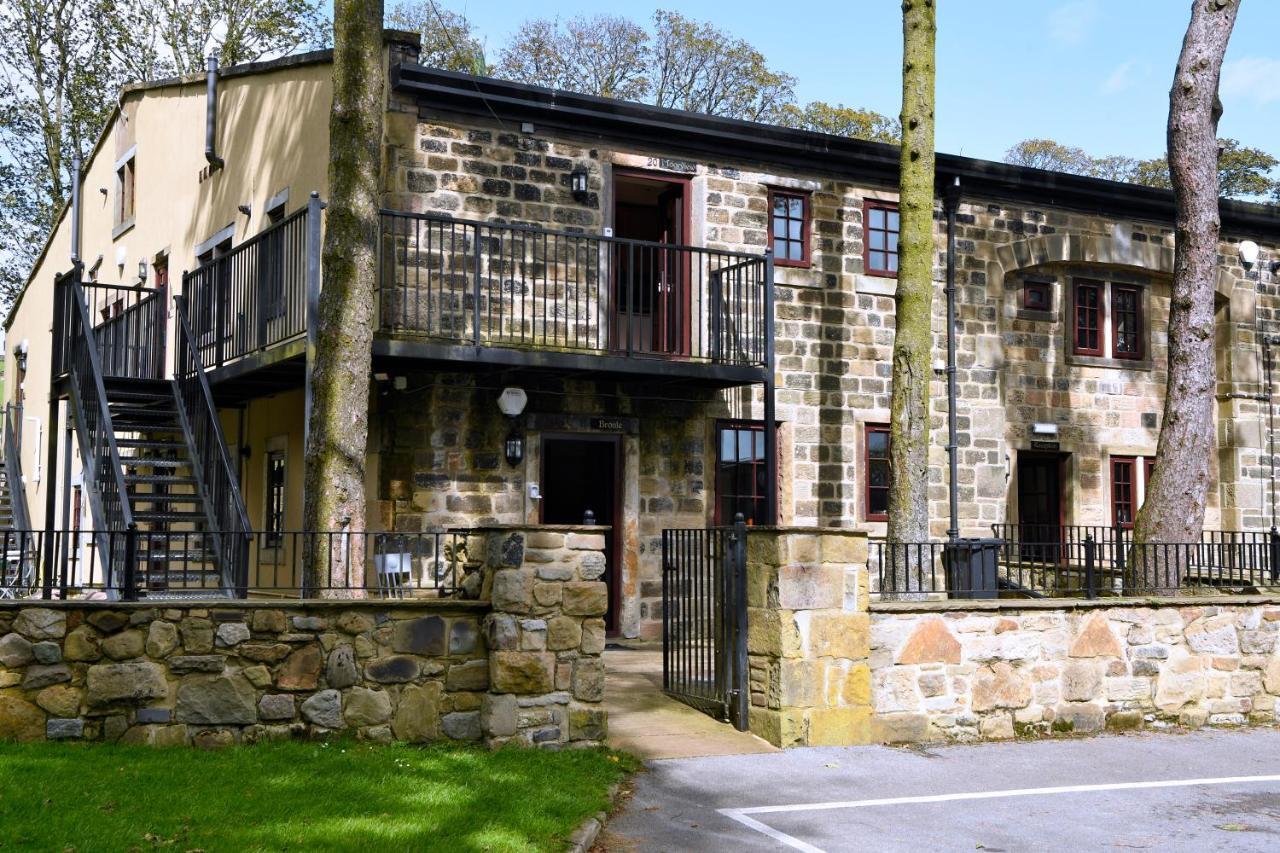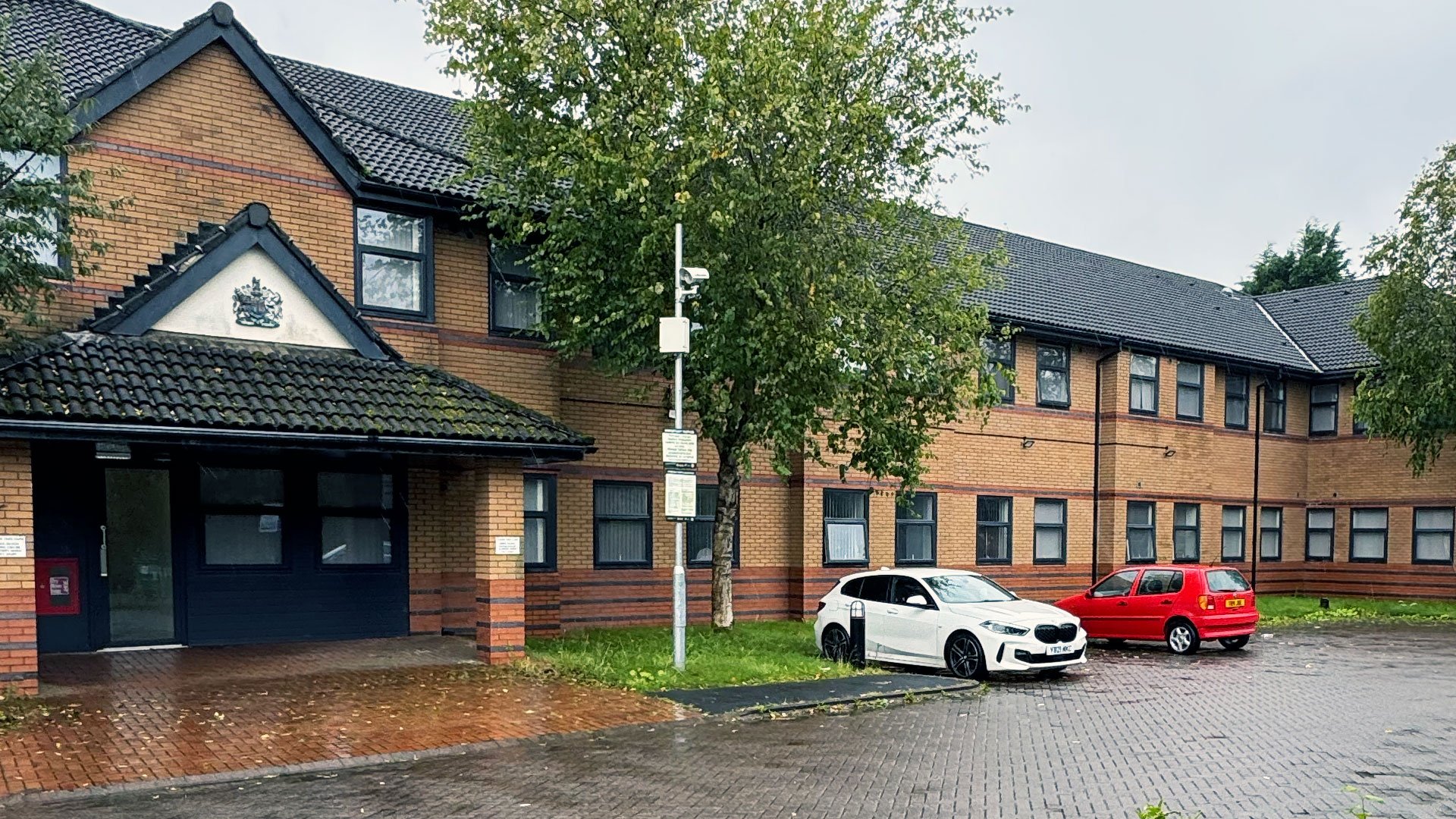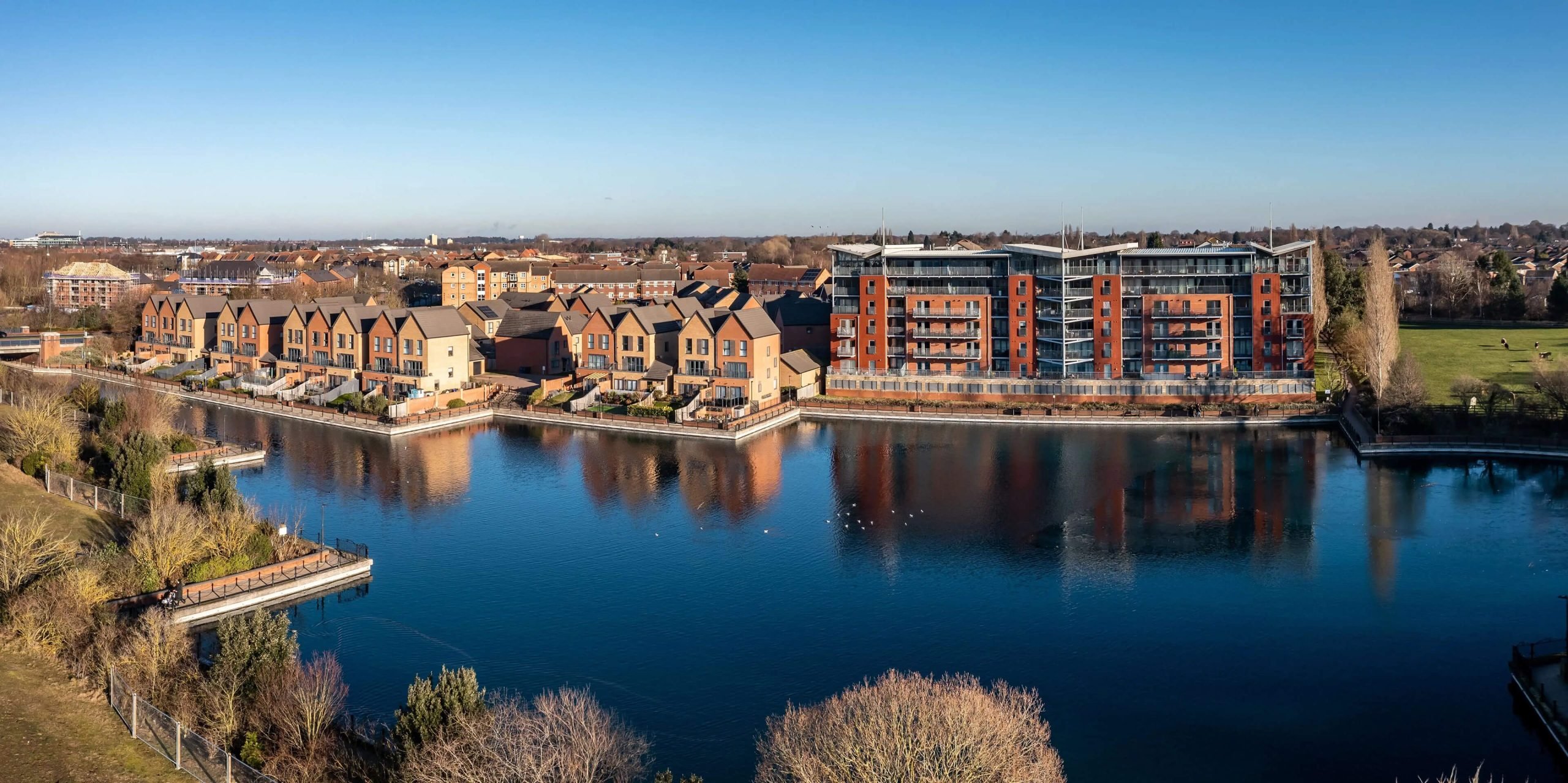For many, building wealth and securing a stable financial future is a major life goal. While there are many paths to this goal, property investment has long been considered a reliable option.
It offers the potential for regular passive income and long-term capital growth, making it an attractive prospect, particularly in the UK market. This guide will demystify property investment for beginners, providing clear, actionable steps to get started.
We’ll cover everything from understanding different types of property investment to assessing your finances, understanding the UK market, choosing the right location, making your first investments, and identifying ways to protect your investment and ensure maximum returns.
Whether you’re dreaming of a comfortable retirement or seeking to diversify your income streams, this guide will provide a solid foundation.
What is Property Investment?
Simply put, property investment involves purchasing real estate to generate income, rather than using it as your primary residence. This income can come from renting out the property or from its increase in value over time, known as capital appreciation. There are two primary routes for those new to this area of investment:
- Direct Investment: This is where you purchase a physical property, such as a house, flat, or commercial building. The most common example is buying a property to rent it out, often referred to as “buy-to-let.”
- Indirect Investment: This route allows you to invest in property without owning a physical asset. Examples include Real Estate Investment Trusts (REITs) or property funds, where you invest in a company that owns and manages properties.
Key Property Investment Terms and Definitions
Let’s break down some essential terms that are fundamental to property investment:
- Buy-to-Let: A popular strategy where you buy a residential property specifically to rent it out to tenants. You become a landlord, responsible for managing the property and collecting rent.
- Rental Yield: This is the income you earn from rent, expressed as a percentage of the property’s value. For example, if you buy a property for £200,000 and earn £10,000 in annual rent, your gross rental yield is 5%. (Note: This is a simplified example. Actual rental yields can vary. According to Zoopla, UK rents grew by 3.9% year-on-year in 2024, with average rents reaching £1,270/month. Note: Zoopla’s index reflects new lets, whereas the ONS index includes all tenancies, explaining discrepancies in reported growth rates.)
- Capital Appreciation: This refers to the increase in the property’s value over time. If you buy a property for £200,000 and sell it for £250,000 five years later, you’ve made a capital gain of £50,000.
- Interest Coverage Ratio (ICR): This is a calculation used by mortgage lenders to assess the affordability of a buy-to-let mortgage. It is the ratio of the projected annual rental income to the annual mortgage interest payments. Lenders typically require the rental income to cover at least 125-145% of the mortgage interest payments, ensuring borrowers have a buffer for costs or void periods.
Why Consider Property Investment?
Property investment offers several compelling benefits:
- Passive Income: Rental income can provide a steady stream of passive income, supplementing your regular earnings or providing financial security in retirement.
- Diversification: Investing in property can diversify your investment portfolio, spreading risk beyond traditional stocks and shares.
- Tangible Asset: Unlike stocks or bonds, property is a physical asset that you can see and touch. This tangibility can be reassuring to some investors.
However, it’s crucial also to acknowledge the potential drawbacks:
- Illiquidity: Unlike shares, which can typically be sold quickly, selling a property can take time. It’s not always easy to access your investment capital quickly.
- Costs: Property investment involves various costs, including mortgage payments, property taxes, maintenance, repairs, and insurance, all contributing to reducing annual profits.
- Market Risks: Property values can fluctuate due to economic factors, changes in interest rates, or local market conditions.
Key Benefits of Property Investment
Investing in property, especially in the UK market, can offer significant financial advantages. Let’s delve deeper into some of the most compelling benefits:
Steady Rental Income
One of the primary attractions of buy-to-let property investment is the potential for consistent rental income. Monthly rental payments can significantly boost your wealth.
For instance, a well-chosen property in Manchester could cover mortgage costs and generate extra income. (Note: According to JLL, rents were expected to rise by 4.5% nationally in 2024, with Central London and Greater London seeing 4.5% and 5.0% growth, respectively).
Property Value Growth Over Time
Historically, property values in the UK have demonstrated a general upward trend over the long term. While short-term fluctuations can occur, real estate has consistently proven to be a sound investment for those willing to take a long-term view.
This increase in value, known as capital appreciation, is a major benefit for property investors. For instance, areas like Liverpool’s Baltic Triangle and Leeds’ city centre have experienced substantial property price growth in recent years.
- Liverpool’s Baltic Triangle: Average property prices rose to £230,000 in 2024, reflecting a 6.3% year-on-year increase, with values surging 54.5% over the past decade due to regeneration projects like the £5.5 billion Liverpool Waters development.
- Leeds’ City Centre: Prices reached £249,000 in 2024, up 6.3% annually, driven by infrastructure projects doubling the city centre’s size and creating 35,000 jobs.
Portfolio Diversification
A well-balanced investment portfolio is key to long-term financial success. Property investment offers an excellent way to diversify your holdings beyond traditional assets like stocks, shares, and bonds. By including real estate, you can reduce the overall risk of your portfolio because property values don’t always move in the same direction as other asset classes. This means that if your stock investments underperform, your property investments might still generate positive returns, balancing out your overall performance.
Property Investment for Beginners: Steps to Get Started
Embarking on your property investment journey may seem daunting, but by following a structured approach, you can set yourself up for success. Here’s a step-by-step guide:
Define Your Goals
Before you even begin looking at properties, it’s essential to define your investment goals. Ask yourself:
- What do you hope to achieve through property investment? Are you primarily seeking long-term capital growth, a steady stream of passive income, or a combination of both?
- What is your investment timeframe? Are you looking for a quick return, or are you prepared to invest for the long haul (e.g., 5, 10, or 20 years)? Define your timeframe upfront to choose the right strategy.
- What is your risk tolerance? How comfortable are you with the potential for market fluctuations and periods without rental income?
Understand Your Budget
Once you have a clearer idea of your investment goals, assess your finances and understand your budget.
- Calculate your available capital: How much money can you realistically invest upfront? This will likely include savings for a deposit, stamp duty, legal fees, and other initial costs.
- Determine your borrowing capacity: If you plan to use a mortgage, speak to a mortgage advisor or use online calculators to estimate how much you can borrow based on your income and credit history.
- Factor in ongoing costs: Remember that property investment involves ongoing expenses such as mortgage payments (if applicable), property management fees (if you choose to use a service like Intus Lettings), maintenance, repairs, insurance, and potential void periods (times when the property is vacant).
Having a solid understanding of your budget will help you narrow down your property search and avoid overextending yourself financially.
Research Property Markets
With your goals and budget in mind, you can start researching property markets that align with your investment strategy. Consider these key factors:
Location
As the old adage goes, “location, location, location.” This is especially true in property investment. Look for areas with strong economic fundamentals, population growth, good transport links, and planned regeneration projects.
Cities like Manchester, Liverpool, and Sheffield have all seen significant investment and development in recent years. Consider whether you want to invest locally or further afield. Whilst the security of local knowledge and proximity may appeal to some, you should also assess other high-yield areas across the UK. Your location choice depends on your personal circumstances, understanding of the market, and overall investment goals.
Tenant Demand
Research the types of tenants that are prevalent in your chosen areas. Are you targeting young professionals, students, or families? Understanding the local demographics will help you select a property that meets the needs of your target tenants. For example, areas near universities may be ideal for student accommodation, while areas with good schools and amenities might be more suitable for families.
Future Growth Potential
Look for areas that are poised for future growth, such as those with planned infrastructure improvements, new businesses moving in, or regeneration projects underway. Cities like Leeds and Sheffield, for instance, are experiencing significant regeneration.
Decide on the Type of Investment
By now, you’ve likely begun considering the type of investment you want to pursue. Here is an overview of the major investment types:
- Buy-to-Let: Involves purchasing a residential property to rent out to tenants. This strategy can provide both regular rental income and long-term capital appreciation.
- Property Flipping: This involves buying a property, renovating it, and then selling it quickly for a profit.
- Real Estate Investment Trusts (REITs): REITs offer a way to invest in property without directly owning physical assets.
Choosing the right type of investment depends on your financial goals, risk tolerance, available capital, and desired level of involvement.
Property Investment for Beginners: Choosing the Right Property
Once you’ve identified your investment goals, understood your budget, researched potential markets, and chosen an investment type, it’s time to start looking for the right property. This is a crucial step that requires due diligence and careful consideration.
Location Checklist
The location of your property will significantly impact its potential for rental income and capital appreciation. Here’s what to look for:
- Rental Demand: Is there a strong and consistent demand for rental properties in the area? Look for areas with a growing population, a healthy job market, and a shortage of available rental housing.
- Transport Links: Properties with good transport links, such as proximity to train stations, bus routes, or major roads, are generally more attractive to tenants.
- Local Amenities: Consider the proximity to amenities like schools, shops, restaurants, parks, and healthcare facilities.
- Safety and Crime Rates: Research local crime rates and the general safety of the neighbourhood.
- Affordability Trends: Consider adjacent towns near major cities for higher rental yields, as affordability pressures in urban cores push demand outward.
Evaluating Properties
When you find a property that seems promising, it’s essential to evaluate it thoroughly before making an offer.
Inspections and Surveys
- Arrange for a professional property inspection to identify any potential issues, such as structural problems, damp, or electrical faults.
- Obtain a surveyor’s report to get a detailed assessment of the property’s condition.
Long-Term Profitability
- Assess the property’s potential for both rental income and capital appreciation.
- Consider factors like the current rental market, projected rental growth, and recent property price trends in the area.
- Utilise resources like the Land Registry to gather data on past sales.
Running Costs
- Calculate all the potential running costs associated with the property.
- Factor in expenses such as maintenance, repairs, insurance, service charges (if applicable), and potential void periods.
Working with Estate Agents
Estate agents can be valuable allies in your property search. Here’s how to make the most of this relationship:
Choosing an Agent
Look for agents with a strong track record in your chosen area and a good understanding of the local market. Check their online reviews and ask for recommendations.
Negotiating Effectively
Once you’ve found a property you’re interested in, your agent can help you negotiate the best possible price and terms. Be prepared to make an initial offer below the asking price, but also have a maximum price in mind.
Financing Your Property Investment
Securing the right financing is a critical step in your property investment journey. For most people investing in property in the UK, saving up for a deposit and securing a mortgage will be how they finance their investment. Understanding the different options available and choosing the one that best suits your needs is essential.
Buy-to-Let Mortgages Explained
If you’re planning to purchase a buy-to-let property, you’ll likely need a specialised mortgage designed for this purpose. Here’s what you need to know:
- Requirements: Buy-to-let mortgages typically have stricter eligibility criteria than standard residential mortgages. Lenders will assess your income, credit history, and the projected rental income of the property. They often require a larger deposit (typically 25-40% of the property value) and may have age restrictions.
- Interest Rates: Interest rates for buy-to-let mortgages are generally higher than for residential mortgages. You can choose between fixed-rate mortgages, where your interest rate remains the same for a set period, or variable-rate mortgages, where the interest rate can fluctuate.
- Affordability Calculations: Lenders use a calculation known as the Interest Coverage Ratio (ICR) to determine how much you can borrow. The ICR is the ratio of the projected annual rental income to the annual mortgage interest payments. Lenders typically require the rental income to be at least 125-145% of the mortgage interest payments.
It’s essential to shop around and compare different buy-to-let mortgage deals.
Saving for a Deposit
Building a substantial deposit is crucial for securing a buy-to-let mortgage and reducing your monthly repayments. Here are some practical tips to help you save:
- Set a Savings Goal: Determine how much deposit you need and set a realistic savings target.
- Create a Budget: Track your income and expenses to identify areas where you can cut back and save more.
- Automate Your Savings: Set up a standing order to automatically transfer a fixed amount from your current account to a dedicated savings account each month.
- Explore Savings Schemes: Depending on your circumstances, you might be eligible for government-backed savings schemes that offer bonuses or tax advantages, such as a Lifetime ISA. (Note: The Lifetime ISA offers a 25% bonus on savings up to £4,000 annually, contributing toward the £20,000 annual ISA limit. More information can be found on the GOV.UK website).
Alternative Financing Options
While buy-to-let mortgages are the most common way to finance property investments, there are alternative options you might consider:
Property Crowdfunding
This relatively new approach allows multiple investors to pool their funds to purchase a property or invest in a property development project. Platforms like Propetly facilitate property crowdfunding. However, it’s important to understand the risks involved, such as the potential for illiquidity and dependence on the platform’s success.
Joint Ventures
Partnering with another investor can be a viable option if you lack the capital to purchase a property on your own. You can pool your resources, share the risks and responsibilities, and split the profits. However, it’s crucial to have a clear written agreement outlining each partner’s contributions.
Bridging Loans
These are short-term loans designed to “bridge” the gap between buying a property and securing long-term financing, or between buying a property and selling an existing one. They can be useful for property flippers or those who need to move quickly. However, they typically come with higher interest rates and fees.
(Note: Bridging loans can be useful in certain situations but may carry higher risks due to their short-term nature and potentially higher costs. It’s crucial to fully understand the terms and conditions before considering this option.)
These alternative financing options can provide greater flexibility, but they also come with their own set of risks. Thoroughly research each option and seek professional advice to determine if they’re suitable for your circumstances.
Property Investment for Beginners: Understanding the Risks
While property investment offers the potential for significant returns, it’s crucial to be aware of the potential risks involved. Managing and mitigating these risks is key to protecting your investment.
Market Risks
Property values are influenced by a range of economic factors and can fluctuate over time:
- Economic Downturns: During recessions or periods of economic uncertainty, property prices may fall or stagnate. It’s important to consider the long-term economic outlook for the area where you’re investing.
- Interest Rate Rises: If you have a variable-rate mortgage, an increase in interest rates will lead to higher monthly repayments. Fixed-rate mortgages may help protect against this risk in the short term but offer less flexibility.
- Local Market Changes: Factors specific to the local area, such as the closure of a major employer or changes in local council policies, can impact property values and rental demand.
Void Periods and Problem Tenants
Managing a rental property comes with its own set of challenges:
- Void Periods: There may be times when your property is vacant between tenancies, resulting in a loss of rental income.
- Problem Tenants: Dealing with tenants who don’t pay rent on time, damage the property, or breach the terms of their tenancy agreement can be stressful and costly. Thorough tenant screening, clear tenancy agreements, and working with an experienced property management company can help minimise these risks.
- Maintenance and Repairs: As a landlord, you’re responsible for maintaining the property and carrying out necessary repairs.
Legal and Tax Implications
Property investment in the UK is subject to various legal and tax obligations:
Stamp Duty Land Tax (SDLT)
This is a tax paid on the purchase of property or land over a certain price in England and Northern Ireland. The amount of SDLT you pay depends on the property price and whether you’re a first-time buyer, buying an additional property, or a non-UK resident. (Note: Current SDLT rates and thresholds can be found on the GOV.UK website).
Capital Gains Tax (CGT)
If you sell a property for more than you paid for it, you may be liable for CGT on the profit. The rate of CGT depends on your income tax bracket and whether the property was your main residence or an investment property. (Note: Information on CGT rates and allowances can be found on the GOV.UK website).
Income Tax
Rental income is subject to income tax. You can deduct certain expenses, such as mortgage interest (subject to restrictions), letting agent fees, and maintenance costs, to reduce your taxable profit.
Landlord Responsibilities
As a landlord, you have legal responsibilities, including ensuring the property is safe and habitable, carrying out gas and electrical safety checks, protecting tenants’ deposits in a government-approved scheme, and complying with various regulations.
(Note: The government’s guide to landlord and tenant responsibilities can be found on the GOV.UK website).
It is essential to seek professional advice from a solicitor, accountant, or tax advisor to ensure you comply with all relevant regulations and understand your tax obligations.
How to Maximise Returns on Your Investment
Once you’ve secured your property investment, the focus shifts to maximizing your returns. This involves a combination of increasing rental income, adding value to the property, and managing costs effectively.
Renovation and Value-Add Strategies
Strategic renovations can significantly increase both the rental yield and the resale value of your property:
- Identify Cost-Effective Improvements: Focus on renovations that offer the best return on investment. This might include updating the kitchen or bathroom, improving energy efficiency (e.g., installing a new boiler or double-glazed windows), or adding an extra bedroom if space allows.
- Consider Your Target Tenant: Tailor your renovations to the preferences of your target tenant. For example, if you’re targeting young professionals, a modern, open-plan layout might be appealing.
- Obtain Necessary Permissions: Before undertaking any major renovations, ensure you have the required planning permissions or building regulations approvals.
Optimising Rental Income
A well-managed rental property can generate a healthy and consistent income stream:
- Set Competitive Rent: Research the local rental market to determine the optimal rent for your property. You want to be competitive while also maximising your income.
- Maintain Good Tenant Relationships: A good relationship with your tenants can lead to longer tenancies and fewer void periods. Respond promptly to maintenance requests, communicate clearly, and treat your tenants with respect.
- Minimise Void Periods: When a tenant gives notice, start marketing the property immediately to find a replacement tenant quickly.
Diversifying Your Portfolio
- Spread Risk: Investing in different property types (e.g., residential, commercial, student accommodation) or in different locations can help spread risk and potentially enhance returns.
- Consider Different Investment Strategies: As you gain experience, you might consider exploring different investment strategies, such as HMOs (Houses in Multiple Occupation) ([link to Knight Knox HMO guide if available]) serviced accommodation, or property development. These strategies can offer higher returns but also come with increased complexity and risk.
Common Mistakes to Avoid
Learning from the mistakes of others can save you time, money, and stress. Here are some common pitfalls to avoid in property investment:
Overextending Financially
One of the biggest mistakes first-time investors make is overestimating their financial capacity. This can lead to taking on too much debt or not having enough cash reserves to cover unexpected costs. It’s crucial to be realistic about your budget and to have a contingency fund in place.
Neglecting Due Diligence
Failing to thoroughly research a property, its location, and the local market can lead to costly mistakes. This includes not getting proper surveys, failing to understand local planning regulations, or not assessing tenant demand accurately. Remember, if it’s worth doing, it’s worth doing properly.
Underestimating Costs
Property investment involves a range of costs beyond the purchase price, including stamp duty, legal fees, mortgage costs, maintenance, repairs, insurance, and letting agent fees (if applicable). JLL forecasts that rising rents may outpace wage growth, potentially straining tenant affordability over time.
Choosing the Wrong Location
A poorly chosen location can negatively impact both rental demand and capital appreciation. Data from the ONS highlights that rental stock remains 24% below pre-pandemic levels, emphasising the importance of thorough location research.
Not Having a Long-Term Plan
Jumping in without a well-defined plan, or selling at the first sign of difficulty is generally inadvisable. It’s important to have a clear plan in place and to review it regularly.
Ignoring Legal Responsibilities
Landlords have various legal responsibilities, including ensuring the property is safe for tenants, protecting deposits, and adhering to relevant regulations.
Property Investment for Beginners: Frequently Asked Questions
To wrap up this guide, let’s address some common questions that beginners often have about property investment:
“How much money do I need to start property investment?”
The amount of money you need to start depends on various factors, including the type of investment, the location, and the property’s value. For a buy-to-let property, you’ll typically need a deposit of at least 25% of the property value, plus funds to cover stamp duty, legal fees, and other initial costs.
“Is property investment worth it for beginners?”
Property investment can be a rewarding long-term strategy for beginners, offering the potential for passive income, capital appreciation, and portfolio diversification. However, it’s important to understand the risks involved, conduct thorough research, and have a well-defined plan.
“What are the best locations for first-time property investors in the UK?”
There’s no single “best” location, as it depends on your investment goals, budget, and target tenant. However, cities like Manchester, Liverpool, Leeds, and Birmingham have been popular among property investors in recent years due to their strong economic growth, regeneration projects, and growing populations.
Some investors also look to up-and-coming areas with the potential for future growth. JLL’s “Big Six” report notes steady demand for city-centre living in these locations. It’s vital to research any potential location thoroughly before investing.
“What is the best real estate investment for a beginner?”
The “best” investment depends on your individual circumstances. Buy-to-let is a popular option for beginners seeking rental income and long-term capital appreciation.
REITs can be a good choice for those who prefer a more hands-off approach or have limited capital. It’s important to weigh the pros and cons of each option.
“Is it worth investing in property for beginners?”
Property investment can be worthwhile for beginners who are willing to put in the time and effort to learn the ropes, understand the market, and manage their investments effectively. However, it’s not a get-rich-quick scheme and requires careful planning, due diligence, and a long-term perspective.
“What is the most profitable property investment?”
There’s no single answer to this question, as profitability depends on a range of factors, including market conditions, location, property type, and your investment strategy.
Strategies that involve adding value, such as property flipping or developing HMOs, have the potential for higher returns but also come with greater risks. Buy-to-let properties in high-demand areas can also generate substantial profits over the long term.
“Can I invest in property with no money?”
While it’s challenging to invest in property with absolutely no money, there are some options that require less capital upfront, such as property crowdfunding or joint ventures.
Some investors may use creative financing strategies, such as seller financing or lease options, but these approaches carry significant risks and complexities.
“Is investing in property in the UK a good idea for beginners?”
Investing in property in the UK can be a viable option for beginners, particularly due to the long-term stability of the UK property market and the potential for both rental income and capital appreciation. However, thorough research, careful planning, and an understanding of the risks are crucial for success.
“What are the best cities for investing in property in the UK?”
Several UK cities offer attractive property investment opportunities. According to recent reports, cities like Manchester, Liverpool and Newcastle continue to show strong growth potential due to regeneration projects and increasing demand.
Other promising locations include Preston, Sheffield, and Stoke-on-Trent. Consider exploring more affordable areas adjacent to major cities, where rental yields may be higher due to increasing demand.
“What are the risks and benefits of investing in property in the UK for beginners?”
Investing in property in the UK offers several potential benefits for beginners, including the potential for long-term capital appreciation, a steady stream of rental income, and the ability to diversify an investment portfolio.
The UK property market has historically shown resilience and long-term growth. However, there are also risks to consider. These include market fluctuations, void periods where the property is unoccupied, potential difficulties with tenants, and the ongoing costs of property maintenance and legal compliance. Beginners should also be aware of the tax implications, such as Stamp Duty Land Tax and Capital Gains Tax.
Key Takeaways
Property investment can be a rewarding path to building wealth and achieving your financial goals, but it’s not without its challenges. By understanding the different types of property investment, researching markets thoroughly, managing risks effectively, and avoiding common mistakes, you can set yourself up for success.
Remember that property investment is typically a long-term game. Be patient, stay focused on your goals, and don’t be afraid to seek professional advice along the way.
As you embark on your property investment for beginners journey, keep in mind that knowledge is power. The more you learn, the better equipped you’ll be to make smart choices, maximise your returns, and build a successful property portfolio.
With careful planning, due diligence, and the right support, you can achieve your property investment dreams.
Ready to start your property investment journey? Explore investment opportunities tailored to your goals today.
Knight Knox are a Manchester-based, proven property investment specialist with more than a 20-year history in the property investment business.
They specialise in identifying and sourcing high-yield property investments for clients across the UK and overseas. Their purpose is to help investors navigate the property investment market by providing expert advice and access to exclusive opportunities, allowing our clients to build their wealth with UK property.













